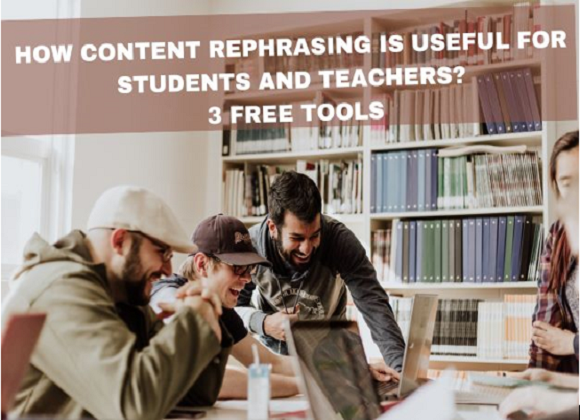Courses
Grow skills with quality courses
Dwarfism is a growth disorder with a typical adult with dwarfism with height 4 feet 10 inches or under. They have generally shortened upper arms and legs and a relatively long torso, shortened hands and fingers, a larger head and a prominent forehead, and a flattened bridge of the nose. Their physical problems can include reduced muscle tone and delayed motor skill development. Dwarfism can be hereditary and there is no cure but it does not affect intellectual abilities. They can live long and contented lives just as anyone else. (Gavin, 2020). Hence the dilemma is ours, regular height individuals, to break out of our stereotypes and accept dwarfs as one of us (Weinstock, 2018). Especially when it comes to dwarf kids in schools in an inclusive classroom with a teacher.
Problems in Classroom and Teacher’s Role
|
Problems |
Teacher’s Role |
|
They need extra time getting to classes due to mobility issues (Gavin, 2020). They may need time to get ready. |
The teacher can modify her class schedule. For example, the first 5 min can be spent catching up with the other kids so the dwarf kid does not feel left out. |
|
They need extra time on tests if manual dexterity is an issue (Gavin, 2020). Even if their intellectual levels are as good as any other child's, they need extra time for tests. |
Unless the student has a learning disability, educational expectations should not differ from those of other students. But some accommodations can be given to balancing the dexterity issue. For example, extra time. |
|
They can miss assignments or class time due to medical visits (Gavin, 2020).
|
Assignments can be differentiated. Instead of a written assignment, a dwarf kid can turn in a recorded one or be allowed to submit work from home or late. |
|
They need step stools for bathrooms, water fountains, classrooms, and other areas (Gavin, 2020) as their height would not allow them to reach high and they can be ridiculed for the same. |
Arrange the class in a way that the students with dwarfism should be able to reach everything their classmates can reach. Be mindful of the heights (Gavin, 2020). This would give the message of sensitivity to the environment and help the communal sensitivity. |
|
They feel anxious, depressed, or embarrassed by their size (Gavin, 2020) if they have not had the fortune of being with a family that made them feel safe. |
Include the student in group work with other students (Owen, 2013). Feel be OK with dwarfism so that they can be OK with it. (Saylor, n.d.). Understand the needs and support them but treat them as equal as other kids. |
|
They can be at risk for teasing or bullying (Gavin, 2020). Bullying is not uncommon in schools, and kids who look different can be vulnerable targets. |
Students’ learning about Dwarfs needs to be scaffolded as the teacher did in the lesson Big Enough (Owen, 2013). It gave space for the students to share their stereotypes in a safe zone. |
|
They need an individualized education program (IEP) or 504 education plans to accommodate their needs (Gavin, 2020). |
The teachers should educate themselves and other students about dwarfism to decrease bullying and increase self-confidence. (Gavin, 2020). |
|
They can face pity or sympathy from teachers and others around them as we have a tendency to feel sorry for those who we see suffering. This can lead to them being soft and expectant of special treatment. |
Treat the students with dwarfism according to their age, not their size. Let the student take ownership of work and empower the student; do not over accommodate the student as this can have a negative impact (Owen, 2013). |
|
They may be ignored or passed over in being selected for events in school or responsibilities. This can be hard-hitting as their intellect is not affected. |
Recognize them for their strengths as that is what they crave (Weinstocks, 2018). Observe them and note what they are best at. Give them a chance to showcase it, be it singing, art or academics. |
While we expect teachers to go deeper into their roles and provide more than accommodations for the dwarfs in the class, teachers would also need ongoing professional development and emotional support to be able to work effectively (Becker & Palladino, n.d.). A well-rounded empathic professional development is what will help a teacher most to manage classrooms that include dwarfs.
Reference
Gavin, M. L. (Ed.). (2020, October). Dwarfism factsheet (for SCHOOLS) (for parents) - Nemours Kidshealth. KidsHealth. https://kidshealth.org/en/parents/dwarfism-factsheet.html.
About the author
 |
Monica Kochar started her career as a Maths teacher in 1993. She has years of experience as a Maths Curriculum Designer with leading education platforms. This write-up has been reproduced from ' Humane Maths ' with the Author's consent. Any views expressed are personal.
|
Comments
Recommended by Gurushala

Technology & Innovation
-By Valentina MilanovaHow Content Rephrasing is Useful for Students and Teachers? 3 Free Tools

Stories of Indian Classrooms
-By GurushalaOn the course of continuous learning- An inspiring teacher story from Pune
Related Articles
